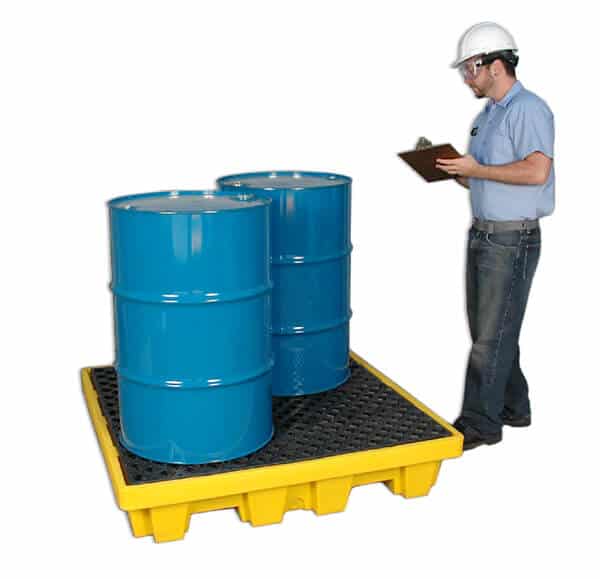If you work with chemicals, there is always the risk of a spill. This risk can be reduced and minimized, but it will never completely go away. Take a look at our guide for what to do in the event of a spillage.
Important: If in any doubt following a spillage, contact the local authority and seek medical attention immediately. Never exceed your training or put yourself, or others, at risk.
Check that no one has come into direct contact with the chemical
The first step in the event of a chemical spill is to ensure that there is no immediate injury to personnel. Quickly assess the situation, remove everyone from the immediate vicinity of the chemical and check that they are not injured.
Do a quick roll call and make sure everyone is accounted for. In a public area, check to make sure no one else is at risk.
In the event of direct contact
Chemicals vary in properties and strength, so it is always important to understand precisely what you are working with. If any individual has come into direct contact with a chemical, check for burns. If there is a burn, use the chemical safety kit which you should have nearby whenever you use hazardous materials, and seek medical treatment as quickly as possible.
If there is no burn, flush the affected area with running water for at least 15 minutes. Remove any items of clothing which have been contaminated while standing under a stream of warm water, preferably in a shower area.
In the event of contact with eyes, flush the eye with tepid water for 15 minutes or longer, and ask the patient to revolve their eye to achieve maximum cleansing. Then seek medical attention. If in doubt about anything following a chemical spill, contact a doctor or hospital immediately.
Evacuate the area
Secure the area as quickly as possible. Set up a cordon to ensure no one can accidentally wander in and put themselves at risk. This is especially important in a public place.
Remember never to put yourself at risk during this stage; simply ensure that the area is secure.
Contain the spill safely
Do your best to contain the spill in a safe manner, using berms, secondary containment platforms, or any other spill containment solution. Wear protective clothing while carrying this out, and never put yourself at risk.
If there are any fumes, or if the area is not ventilated, do not enter the affected area. Remember, you are simply trying to prevent the spill from spreading. If you cannot contain it safely, you must retreat to avoid damaging your health.
Contact local authorities
Unless you are able to clean up the spillage completely, and are trained to assess the area and ensure its safety, you must contact the relevant local authorities. Numbers for local authorities in your area should be easily accessible within your organization.
All spillages should be reported in the company incident log, and any medium or large scale spillages must be reported to higher authorities who can assess the damage and your response.
Retrospective Appraisal
As with any occurrence in business, it is important to understand what happened, why, and how it can be improved upon in the future. Make an audit of your spill prevention practices and methods, and consider implementing additional solutions to prevent mishaps in the future.
Take a look at our material handling products, emergency kits and chemical spill solutions, or get in touch with our team to find out more about what we can offer to you and your company.
